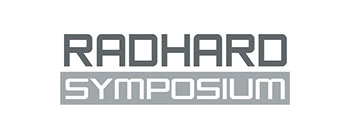Abstract

Single Event Effect Testing using Medical Synchrotron
Martin Eizinger1, Wolfgang Treberer-Treberspurg2, Bernhard Seifert1
1 FOTEC Forschungs- und Technologietransfer GmbH
2 Fachhochschule Wiener Neustadt GmbH
Abstract
The feature size of commercial off-the-shelf electronic components has continuously decreased over decades, well below 80 nm [1]. This structure size – such as the gate length of a transistor – is directly related to the critical charge for a Single Event Upset (SEU) [2], meaning that the number of charge carriers required to cause an upset is lower in smaller devices. In the context of radiation induced Single Event Effects (SEEs), the critical charge is expressed in terms of the threshold Linear Energy Transfer (LET) [3]. For instance, an ionizing particle that locally causes an LET greater than the threshold LET excites enough electron-hole-pairs within the channel of a transistor to corrupt the logic state of the device (SEU).
In addition to the threshold LET, three other device-specific parameters define the SEU susceptibility of a device as a function of LET in the form of an integrated Weibull distribution [4]. Because the parameters vary between devices, they shall be obtained experimentally by exposing the sensitive region, or region of interest (ROI), to high energy particles. The highest fidelity can be achieved by heavy ion irradiation, but heavy ion accelerators are scarce, and heavy particles have a limited penetration depth into the target [5]. For this reason, heavy ion tests require preparation steps of the Device Under Test (DUT) such as decapping, and need to be performed in vacuum.
We present a simplified way to obtain an SEE characterization with less accuracy at more common medical particle accelerators. To demonstrate their suitability for Radiation Hardness Assurance (RHA) testing, specifically SEU testing of COTS electronics, irradiation tests with protons and carbon ions with a range well above the DUT thickness were performed. A combination of direct and indirect ionization effects serves to infer characteristic quantities such as the threshold LET and the cross-section. We present the methodology and first results for this indirect approach.
References
[1] D. Kobayashi, "Scaling Trends of Digital Single-Event Effects: A Survey of SEU and SET Parameters and Comparison With Transistor Performance," in IEEE Transactions on Nuclear Science, vol. 68, no. 2, pp. 124-148, Feb. 2021, doi: 10.1109/TNS.2020.3044659.
[2] E. L. Petersen, P. Shapiro, J. H. Adams and E. A. Burke, "Calculation of Cosmic-Ray Induced Soft Upsets and Scaling in VLSI Devices," in IEEE Transactions on Nuclear Science, vol. 29, no. 6, pp. 2055-2063, Dec. 1982, doi: 10.1109/TNS.1982.4336495.
[3] Online: https://creme.isde.vanderbilt.edu/CREME-MC/help/critical-charge-and-threshold-let [accessed 12.02.2024]
[4] A. J. Tylka, W. F. Dietrich, P. R. Boberg, E. C. Smith and J. H. Adams, "Single event upsets caused by solar energetic heavy ions," in IEEE Transactions on Nuclear Science, vol. 43, no. 6, pp. 2758-2766, Dec. 1996, doi: 10.1109/23.556863.
[5] Online: https://www.bnl.gov/nsrl/userguide/let-range-plots.php [accessed 12.02.2024]
Acknowledgments
The authors thank the Non-Clinical Research team at MedAustron for their support.
![[Translate to English:] [Translate to English:]](/fileadmin/uploads/intranet/events/radhard/2023/header-radhard2023.jpg)
